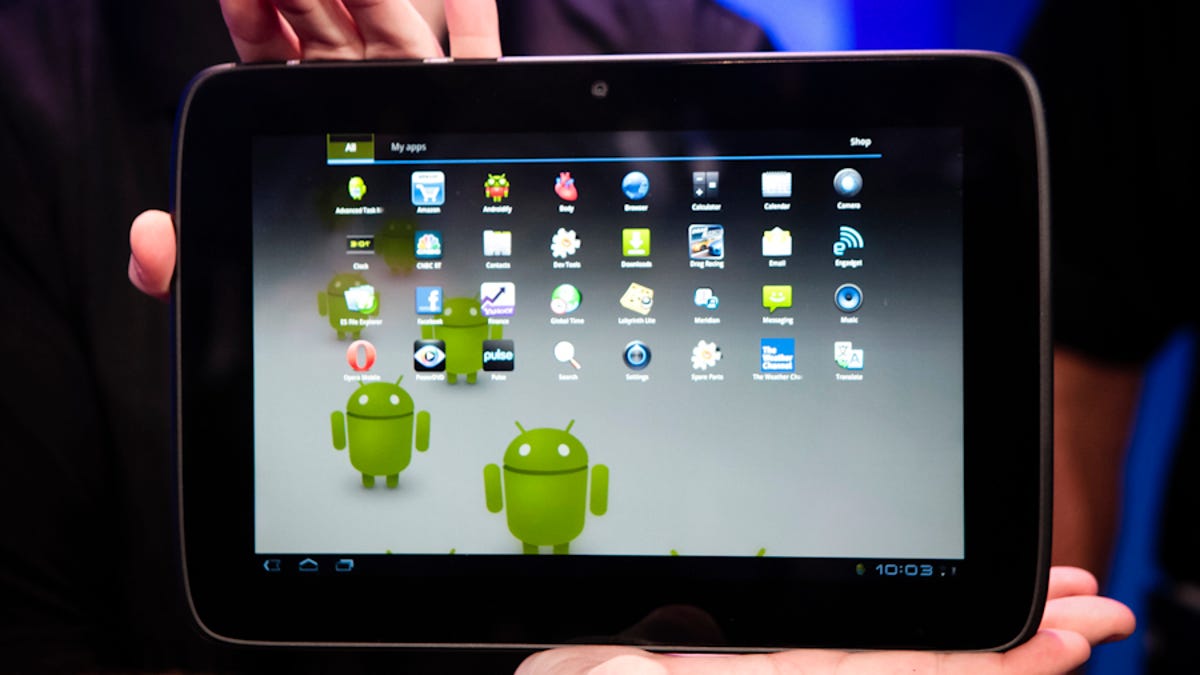Intel brandishes first Google Android tablet
Intel flourished an Android tablet using its next-generation Atom processor for phones and tablets at its developer conference today in San Francisco.

SAN FRANCISCO--Intel hauled out its first Android tablet running on "Medfield," an upcoming Atom chip for smartphones and tablets, while two executives also chatted with CNET about their relationship with Google, all at Intel's developer conference today.
The Medfield Atom chip is one of Intel's most power-efficient chip designs--a strict requirement for tablets and smartphones. It contains a single processing core--as opposed to more power-hungry dual-core Atom chips used in Netbooks--and will be available in devices in the first half of 2012.
The tablet that Intel showed today (see photo below) is a so-called reference design that the company will supply to tablet makers that would use it as a template for their own product.
Importantly, Intel-based tablets and smartphones will be targeted at Google's Android software, not Intel's internal MeeGo operating system. The latter has been relegated to automotive and industrial applications mostly and is no longer seen as a promising operating system for consumer devices. To drive this point home, Intel reaffirmed its relationship with Google today.
CNET sat down briefly with two Intel phone executives to talk about the relationship. The reaffirmation of the relationship is about "optimizing Intel for the Android platform for phone and for tablets," said Mike Bell, co-general manager of the phone division. "So, as a [device maker] you'll be able to go out and build a device with the full blessing and backing of Intel and Google," he said.
Intel has done an about-face of sorts. Its phone efforts had focused heavily on Nokia until that company made a dramatic switch to Microsoft's Windows phone platform. "We were very focused on Nokia. Mike and I took over in April and got the company very focused on the Android ecosystem," said Dave Whalen, the other co-manager of the phone division.
Both Bell and Whalen admit that Intel has some catching up to do with consumer devices already out there using Honeycomb (tablets) and Gingerbread (phones).
So when will Intel-based phones be available? "So, you'll see phones in the marketplace in the first half of 2012. It will be [Android] Gingerbread then transitioning to Ice Cream Sandwich at the appropriate time," said Whalen.
Medfield will be distinguished by better graphics performance and improved power efficiency, they said.
And what's coming next after Medfield? Neither would say, but they are pushing the platform a lot harder. "We're working very hard to accelerate that roadmap since Dave and I took over."

